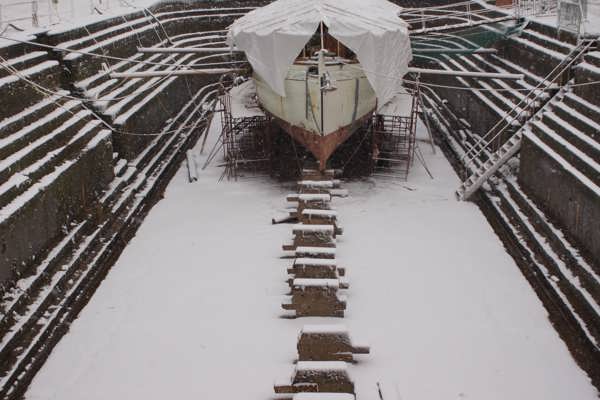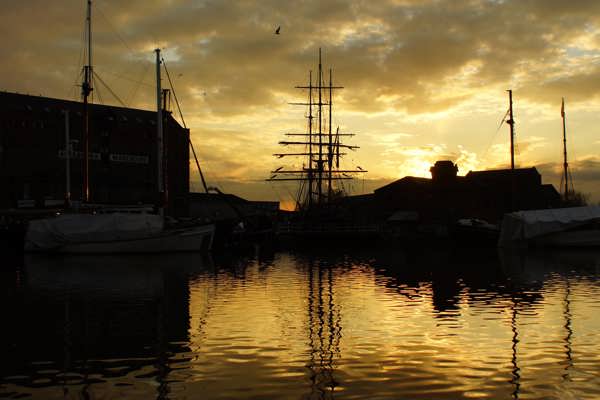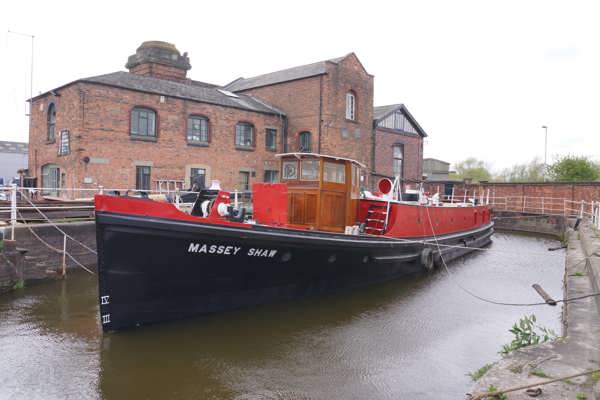


Dry Dock
There are two graving (or dry docks) on the western side of the Main Basin. The smaller dock was built in 1818 and was used for repairing small vessels that travelled along the River Severn.
The larger drydock was built in 1853 to service the larger ships that made their way to Gloucester via the Gloucester Sharpness Canal.
Water has been drained out of the gravings in a variety of ways over the years. During the early days of the dry dock, water drained naturally into the river. When river levels were high, eight men were required to pump the water manually. Steam driven pumps powered from the nearby engine house were then used, before modern electronic centrifugal pumps were installed below the west quay for today’s operations.
The award-winning T. Nielsen & Company have been operating the drydock since 1988 and are highly regarded for their work building or restoring vessels from skiffs to tall ships. They were responsible for building or renovating a number of craft that were involved in Queen Elizabeth II’s Diamond Jubilee River Pageant, including the Royal Barge, Gloriana.
#GlosTour
Share your view of Dry Dock on Instagram, Twitter or Facebook & use #GlosTour
Fun Fact
T. Nielsen & Company won the contract to renovate Admiral Nelson’s famous flagship, HMS Victory. The team of shipwrights have been working on the iconic vessel since December 2012.
Previous
5. Gloucester LockWhat's Next
7. Llanthony BridgeEstimated time: 2 minutes
Find out how to get from Dry Dock to the next location:
Get Directions